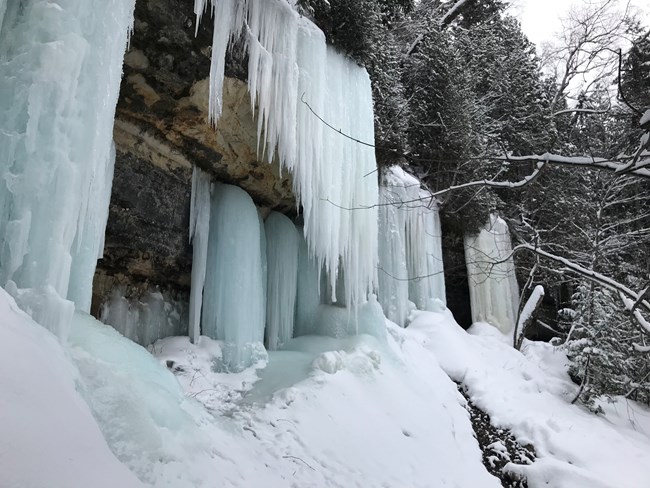
NPS photo Due to its geographic location and proximity to Lake Superior, Pictured Rocks National Lakeshore is greatly impacted by environmental factors of weather and climate. The park is located approximately 46 degrees north latitude and 86 degrees west longitude. The average high temperatures in winter months are about 25°F (-4°C) and during summer months about 70°F (22°C).
For more information... Climate Change in National Parks (pdf) Weather - Pictured Rocks webpage National Park Service Climate Friendly Parks - NPS website National Park Service Great Lakes Inventory and Monitoring Network - NPS website National Weather Service Forecast Office, Marquette, Michigan - NWS website |
Last updated: August 20, 2021
